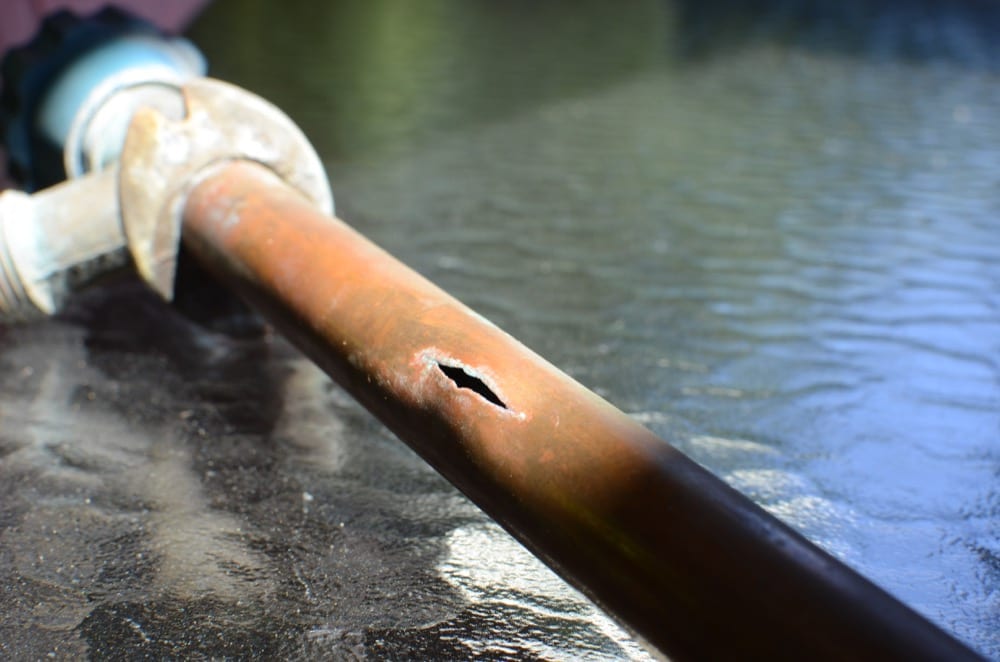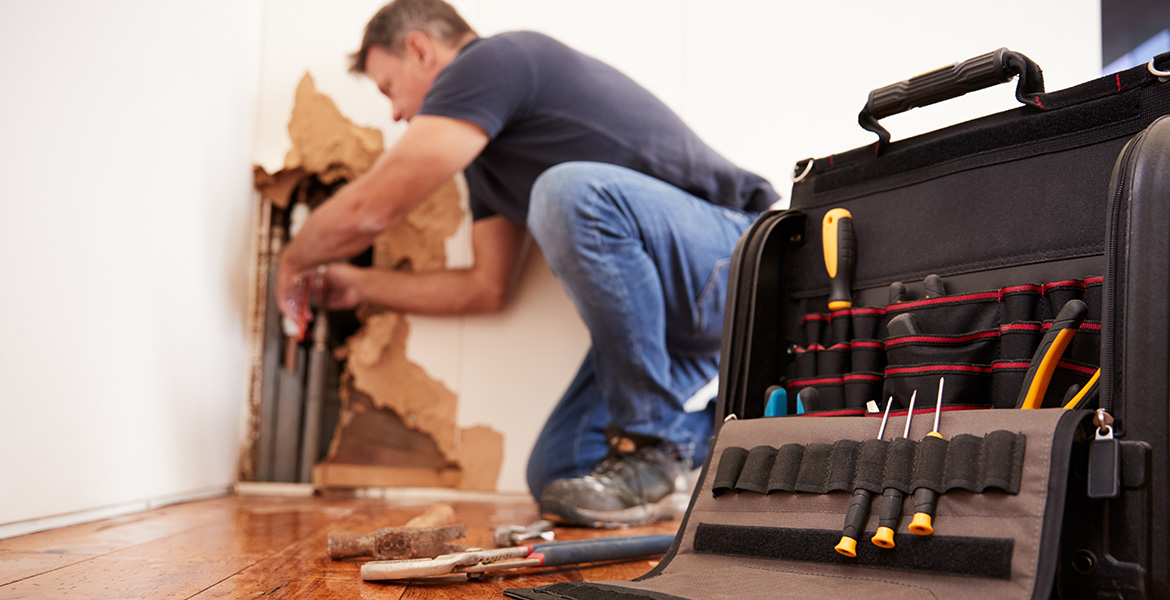What Homeowners Should Know About Septic Tank Maintenance
What Homeowners Should Know About Septic Tank Maintenance
Blog Article
We've come across this article involving Water Damage Restoration Do’s And Don’t below on the internet and think it made sense to discuss it with you on this page.

What should you do if a water pipe bursts in your house, developing a mini-waterfall and also swamping an area of your residence? The longer you wait, the extra extreme the water damages in your building. For these factors, you need to learn what to in case of a ruptured water pipeline.
Turn off the Main Waterline Valve
The first thing you have to do is close the shut-off valve. Look for the neighborhood shut-off shutoff to turn-off water in one particular area just. You have to turn-off the main waterline shutoff if you do not understand where the localized shut-off valve to the fixture is. This will certainly cut off the water in your whole house. Generally, the primary valve is located outside the house beside the water meter. If it's not there, you can also find it in the cellar at an eye-level or it could be in the first flooring on the ground. Usually, home builders however the shut-off valve generally ground degree shower room or right alongside it.
Call Water Damages Repair Pros for Help
After shutting the water resource, call the pros for aid. With their expert assistance, you can reduce worsening because water can leak with your points resulting in distorted baseboards, loosened ceramic tiles, or damages framework.
Document the Damage For Insurance policy
As you are waiting for the pros to arrive, document the damage triggered by the errant pipe. Remaining aggressive with this permits you to file a case for coverage, which will aid you and your family get back on your feet.
Restore Points That Can Be Conserved
As soon as you're done taking images, browse the items and get the most essential ones from the pile. Dry them off and also try to preserve as long as you can. Drag them far from dampness so they can start to dry out.
Begin the Drying Process
While waiting for the pros, you can begin the drying procedure. The good news is, water from your waterlines are tidy so you do not need to fret about drain water. The streaming water might have disrupted the dirt and also particles in your floorboards and carpetings. Be prepared with gloves as you make use of containers to dump out the water. Then, remove as long as you can with old towels. You can additionally activate an electric fan or open home windows to advertise air flow. This will accelerate drying out as well as deter mold as well as mildew development.
Professionals are the only ones certified to take care of the burs pipes and also subsequent damage. As well as bear in mind, pipes do not just instantly burst. You will usually see red flags like gurgling paint, weird noises in the plumbing, moldy smell, caving ceiling, peeling wallpaper, or water spots. Pay attention to these points, so you can nip any concerns in the bud.
What should you do if a water pipeline bursts in your residence, producing a mini-waterfall and also swamping an area of your residence? For these reasons, you need to discover what to in case of a ruptured water pipe. After shutting the water resource, call the pros for help. With their specialist assistance, you can alleviate worsening because water can permeate with your things resulting in distorted walls, loosened tiles, or damages framework. Thankfully, water from your waterlines are clean so you do not have to stress about sewage system water.
BROKEN WATER PIPES: COST TO REPLACE & WAYS TO FIX A PIPE
CAUSES OF A BROKEN WATER PIPE
A water pipe can break for several reasons depending on the environment you live in, type of pipe, and circumstances.
The most common cause of broken pipes is freezing. If you live in a colder climate, this could happen. When water freezes it increases in volume by 9% and the pressure in the pipes can go from 40 psi to 40,000 psi. Clearly, this could be detrimental to the pipes. Water freezing causes quick expansion, which puts stress on the pipes and could lead them to crack or weaken. When water thaws, it will leak out the cracks. Other changes in water pressure can also cause breakage. Another common cause of broken water pipes is age.
Depending on the material, water pipes can last anywhere from 70-100 years. But the older they get, the more susceptible they are to weakening and corroding. Older pipes coming into contact with another material could speed up the corrosion process as well. PVC pipes can become brittle with age, while copper is prone to corrosion and stress over time. Something that could also potentially break water pipes is when they move. They may move from construction or the house settling. Moving can stress the fixed pipe which may lead to a leak or burst pipe.
HOW MUCH WATER COULD LEAK INTO YOUR HOUSE FROM A BROKEN PIPE?
The amount of water that leaks depend on how big the break in a pipe is. If it is just a minor crack, water will slowly leak out. This isn’t as serious as a full broken pipe, but it can still cause significant damage to your home. Burst pipes can leak up to 10 gallons of water per minute. The amount of water leaked also depends on what appliance is involved. The water line to your refrigerator can leak ½ to 1 gallon per minute depending on water pressure. One toilet supply line may leak 2-3 gallons a minute and a washing machine hose will leak up to 10-12 gallons per minute.
TURN THE WATER OFF
Doing this first is imperative; everything else can wait. You need to deactivate the water supply to stop the flow of water and prevent more water from leaking into your home. Shutting off the water could potentially save you thousands in water damage repairs. Locating the water shutoff valve depends on the climate you live in. For colder climates, the valves are usually inside, such as in the basement. For houses in milder weather, the shutoff valves will probably be outside—either attached to an exterior wall or in an underground box with a removable lid.
OPEN A FAUCET
The next thing to do is to open a faucet or turn on a sink. This will relieve any remaining water pressure in the pipes and ensure a full-shut down.
GET RID OF THE WATER
The quicker you get rid of the water, the less water damage and mold there could be. Use a mop and a shop vacuum to help get clean up the water. Use towels to dry everything the best you can.
CUT AND REMOVE THE DAMAGED PIPE
Once you have shut off the water and drained the damaged water pipe, you can begin to fix the issue. Cut out the damaged section of the pipe with a pipe cutter, ensuring that you also cut one inch extra on each side of the damage. Once you get rid of the broken part of the pipe, you may begin repairs.
https://www.wmhendersoninc.com/blog/broken-water-pipes-cost-to-replace-ways-to-fix-a-pipe/

I recently found that blog entry about What To Do And What Not To Do When Dealing With Water Damage when exploring the search engines. Are you aware of somebody else who is fascinated with the subject? Be sure share it. Thanks so much for going through it.
Report this page